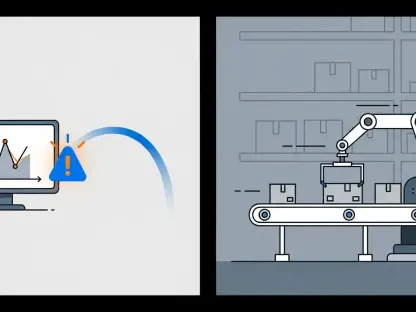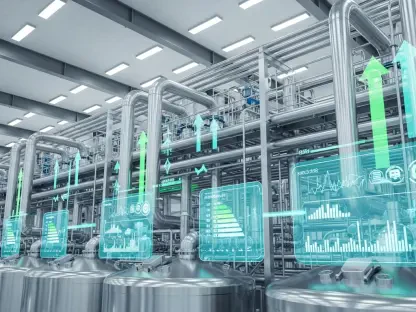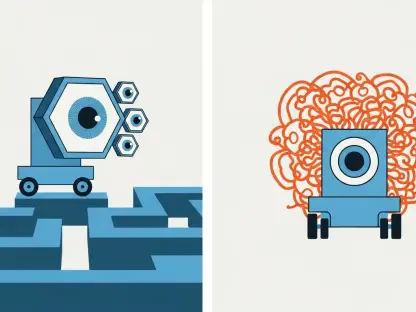Laurent Giraid, a renowned technologist specializing in Artificial Intelligence, is with us today to discuss the latest innovations in AI-driven task automation. With a deep focus on machine learning, natural language processing, and AI ethics, Laurent offers insights into how Asana’s new AI-automated templates are transforming business processes.
What are AI-automated templates in Asana’s Workflow Gallery, and how do they function?
AI-automated templates in Asana’s Workflow Gallery are designed to streamline the automation of various business processes. These templates provide a foundation for creating AI agents that manage routine tasks, resulting in enhanced efficiency and productivity. By embedding intelligence into the workflow, Asana enables businesses to automate processes that traditionally required significant human involvement.
How do these templates assist businesses in automating routine tasks and processes?
These templates act as a framework that businesses can leverage to automate repetitive tasks, allowing human resources to focus on more strategic areas. With AI agents embedded, companies can handle task triage, prioritize actions, and manage routine communications with reduced human input, ultimately saving time and minimizing errors.
Can you explain what a “smart workflow” is and how AI agents are integrated into it?
A smart workflow, as integrated by Asana, incorporates AI agents at various stages to optimize efficiency. For instance, an AI agent might perform task evaluation, prioritize tasks in the intake phase, and suggest resources necessary for successful execution. This intelligent integration allows AI to manage tasks that once relied heavily on human decision-making, offering a streamlined and consistent process.
What types of corporate processes can benefit from these AI-automated templates?
Corporate processes that involve repetitive steps or require constant monitoring, like IT operations, project management, marketing, and people management, are ideal candidates for AI-automated templates. By embedding these templates, organizations can enhance efficiency in these areas and ensure more consistent outcomes.
Could you provide an example of how AI tools are used in a specific workflow, like creative production?
In creative production, AI tools can assist by managing project phases such as planning, asset intake, and execution. For example, AI can generate preliminary drafts, suggest design resources, automate email communications with stakeholders, and deliver analytic insights into project progress. This automation liberates creative teams to focus on core creative tasks, enhancing output quality.
What kind of tasks can the AI tools complete within a workflow?
AI tools can take on a broad spectrum of tasks, including triaging incoming requests, suggesting resources, generating content, translating material into multiple languages, and identifying existing assets for adaptation. Such versatility allows these tools to replace routine human work with smart automation, ensuring efficiency and innovation.
How do the AI agents help users who might be uncertain about taking certain actions in a workflow?
AI agents act as advisors, offering suggestions and guidance based on the specific workflow context. Whether faced with decision-making, resource allocation, or prompt responses, the agents provide tailored advice, helping users overcome uncertainties and navigate complex workflows with confidence.
What are some other companies in the market offering similar AI-driven workflow solutions?
The market is burgeoning with companies offering AI-driven workflow solutions, including Atlassian, ServiceNow, and Salesforce. Each of these companies has developed AI agents that cater to different business needs, such as IT management, sales processes, and cross-sector coordination, aiming to automate and optimize workflows.
How does Asana differentiate itself from competitors like Atlassian, ServiceNow, and Salesforce in terms of AI offerings?
Asana differentiates itself by offering a crossover appeal across various business processes, not limited to specific sectors. While competitors focus on niche areas like sales or IT management, Asana emphasizes cross-functional coordination, ensuring their tools are adaptable to a broader range of organizational strategies and objectives.
Which AI models does Asana’s AI Studio support, and why were these chosen?
Asana’s AI Studio supports leading models from OpenAI and Anthropic. These models are chosen for their ability to handle complex tasks and provide reliable performance across diverse applications. By integrating with top-tier models, Asana ensures its tools deliver cutting-edge capabilities to enhance business processes effectively.
Can Asana’s AI tools be integrated with products from other vendors? If so, how does this integration benefit users?
Yes, Asana’s AI tools can be integrated with products from other vendors like Salesforce and ServiceNow. This interoperability allows users to harness comprehensive capabilities, ensuring consistent workflows that transcend organizational silos. Integrating with various platforms enhances workflow flexibility and maximizes the utility of existing technological assets.
How are companies across different sizes and sectors using generative AI and agentic AI to improve productivity?
Companies across various industries are employing generative and agentic AI to boost productivity by automating mundane tasks, redefining operational strategies, and enhancing overall efficiency. Whether in manufacturing, telecommunications, or retail sectors, AI tools are helping organizations optimize resource use and focus on innovation-driven objectives.
According to Wayne Kurtzman from IDC, how high is the priority for companies to create a workforce that uses AI assistants?
Creating a workforce proficient in using AI assistants is of considerable importance, as cited by Wayne Kurtzman from IDC. This transformation aims to boost business success by leveraging AI-driven insights and efficiency. More than 46% of companies globally prioritize this, demonstrating a strong commitment to integrating AI into everyday operations.
What were the key findings of the IDC Annual Collaboration Study 2024 regarding AI use in companies?
The IDC Annual Collaboration Study 2024 revealed the widespread adoption of AI across companies in the US and Western Europe, with over 92% utilizing AI in daily operations. This illustrates a significant trend towards embedding AI within organizational workflows, reflecting the high value placed on automation and smart technology integration.
How is achieving the necessary IT infrastructure surpassing other IT priorities according to IDC research?
Achieving a robust IT infrastructure now surpasses other priorities, driven by the need to support AI-driven workflows efficiently. As organizations increasingly rely on AI for task automation, establishing infrastructure that accommodates these advanced technologies becomes critical, laying the foundation for sustained growth and innovation.
What is your forecast for AI’s role in transforming businesses in the upcoming years?
Looking ahead, AI will significantly transform business landscapes by driving automation, enhancing decision-making, and fostering innovation. As AI technologies mature, their ability to integrate seamlessly into organizational processes will redefine how companies approach productivity and strategic planning. AI’s role will be pivotal in shaping tomorrow’s business models and customer experiences.









